There are several types of mushroom fruiting chambers that can be used for growing mushrooms, each with its own advantages and disadvantages. We will discuss some of the best mushroom fruiting chambers in this article with features, benefits and limitations.
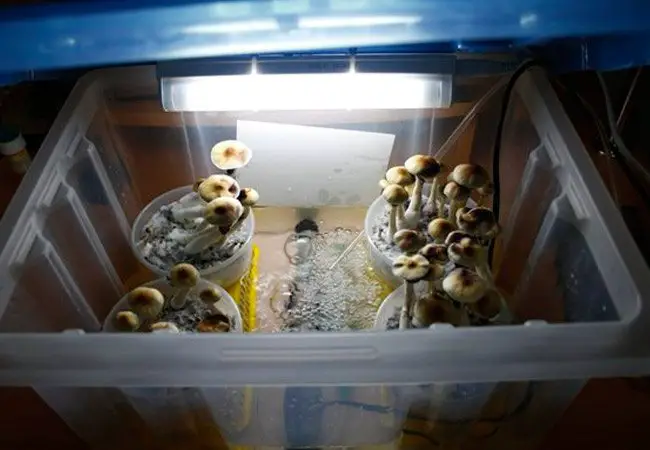
Table of Contents
best mushroom fruiting chamber
Here is a list of best mushroom fruiting chambers:
- Monotub fruiting chamber
- Shotgun terrarium
- fruiting bag
- spawn bag
- glove box
- flow hood
- walk-in chamber
- dedicated fruiting chamber
- grow tent
Monotub fruiting chamber
Monotub is a type of fruiting chamber that is constructed using a plastic storage tub and some basic materials. It is a popular choice among mushroom cultivators due to its simplicity and affordability. The design is easy to set up and maintain, making it a great option for beginners.
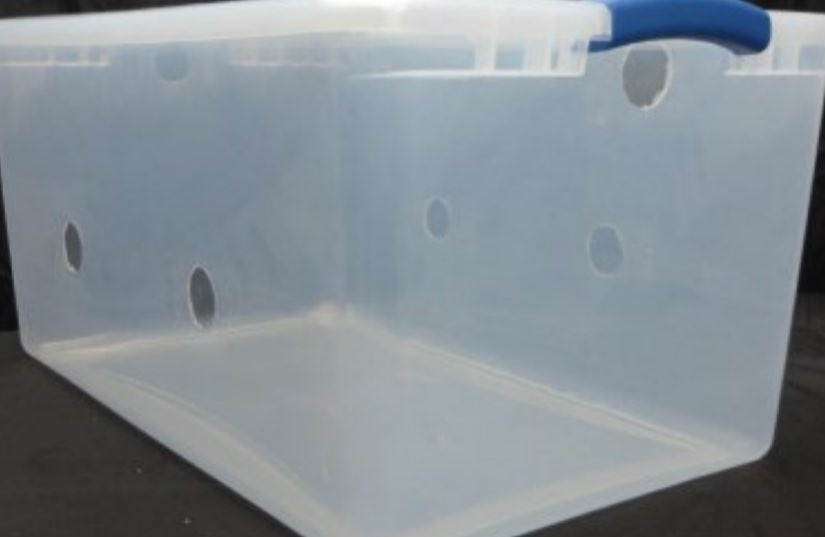
One of the main benefits of using a Monotub is that it can be used to grow multiple strains of mushrooms at once, which can increase the diversity of your harvest. Additionally, it is versatile and can be used to grow a variety of different mushroom species, such as Psilocybe cubensis and Panaeolus cyanescens.
However, there are also some drawbacks to using a Monotub. The yields may be lower compared to other fruiting chamber options, and it does not offer as much control over environmental factors such as temperature, humidity, and airflow. Additionally, it may not be suitable for all mushroom varieties, particularly those that require more specific growing conditions.
Monotub is a good option for those who are new to mushroom cultivation and are looking for an affordable and easy-to-use fruiting chamber. But it is also important to research and compares different options before deciding which one to use, to ensure that you choose the best one for your specific needs and goals.
Monotub Vs Shotgun Fruiting Chamber complete comparison
Shotgun terrarium
A Shotgun terrarium is a type of fruiting chamber that uses a humidifier and a cooling system to maintain optimal growing conditions for mushrooms. This type of fruiting chamber offers greater control over environmental factors, such as temperature and humidity, which can lead to higher yields and the ability to grow a wider variety of mushrooms.
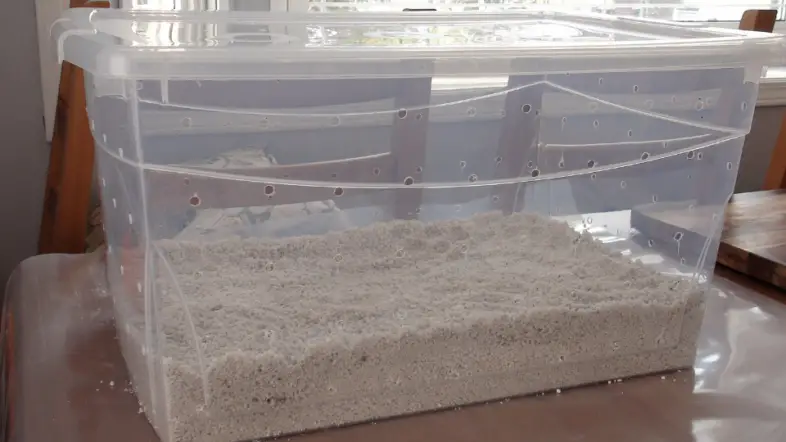
The humidifier and cooling system work together to maintain the ideal conditions for mushroom growth, such as high humidity and moderate temperatures. The humidifier increases the humidity level inside the terrarium while the cooling system maintains the temperature within the optimal range. This setup allows the cultivator to have greater control over the conditions, which can lead to better results and higher yields.
Suitable mushrooms for this type of fruiting chamber include Agaricus bisporus and Pleurotus ostreatus, which are commonly grown commercial species.
However, the construction and maintenance of a shotgun terrarium can be more complex and expensive compared to other fruiting chamber options. It requires more frequent attention and monitoring to ensure that the conditions remain optimal, which can be time-consuming and labor-intensive. Additionally, it can be more expensive to build and maintain, as it requires specialized equipment such as a humidifier and cooling system.
A shotgun terrarium is a good option for experienced cultivators who are looking for greater control over environmental factors and higher yields. However, it may not be the best choice for beginners or those on a budget, due to its complexity and expense.
fruiting bag
A fruiting bag is a type of fruiting chamber that is made of breathable materials, such as filter patches or micropore tape. It contains spawn and substrate and it is often used for growing mushrooms in bulk. The bags are easy to use, lightweight, and portable, which makes them suitable for both indoor and outdoor cultivation.
The bags are often pre-sterilized, which helps to reduce the risk of contamination and makes them easy to use. The breathable material allows the mushroom mycelium to colonize the substrate and fruit. These bags are also suitable for mushroom species that require high humidity, such as Agaricus bisporus, Pleurotus ostreatus, and Pleurotus eryngii.
However, fruiting bags have some limitations. They have a short shelf life, which means that they must be used within a certain period of time after they are made. Additionally, the yields from fruiting bags may be lower compared to other fruiting chamber options and it may not be suitable for all mushroom varieties, particularly those that require more specific growing conditions.
Fruiting bags are a good option for those who are looking for an easy-to-use and portable fruiting chamber, particularly for outdoor cultivation or for growing mushrooms in bulk. However, they may not be the best choice for those who are looking for high yields or for growing certain mushroom varieties that require specific growing conditions.
spawn bag
A spawn bag is a type of fruiting chamber that is similar to a fruiting bag. It is made of breathable materials, such as filter patches or micropore tape, and contains spawn, which is the vegetative part of the mushroom mycelium. Spawn bags are used for growing mushroom spawn for further cultivation.
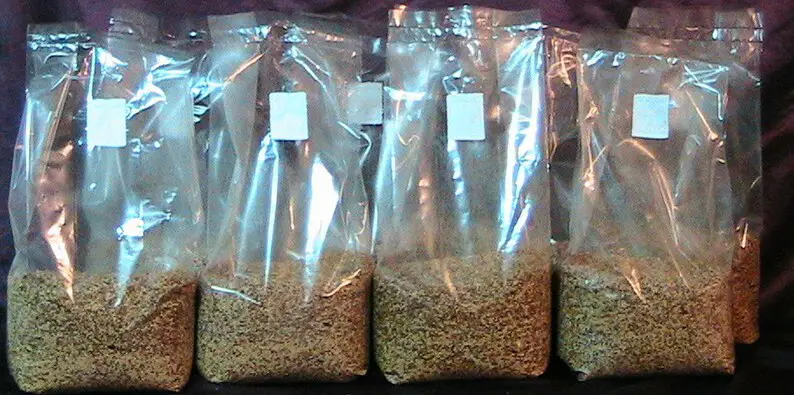
The bags are easy to use, lightweight, and portable, which makes them suitable for both indoor and outdoor cultivation. They can be used to grow to spawn for various mushroom species and can be used in conjunction with other fruiting chamber options. The breathable material allows the mushroom mycelium to colonize the substrate and fruit.
However, spawn bags have some limitations. They have a short shelf life, which means that they must be used within a certain period of time after they are made. Additionally, the yields from spawn bags may be lower compared to other fruiting chamber options and it may not be suitable for all mushroom varieties, particularly those that require more specific growing conditions.
Spawn bags are a good option for those who are looking for an easy-to-use and portable option for growing mushroom spawn for further cultivation. However, they may not be the best choice for those who are looking for high yields or for growing certain mushroom varieties that require specific growing conditions.
Here if you do you want to know about Still Air Box and How To Make A Still Air Box?
glove box
A glove box, also known as a glove box enclosure or a glove box chamber, is a sealed container that is designed to allow the user to manipulate materials or work with hazardous materials inside without introducing contaminants from the outside. This is achieved by providing a built-in HEPA filter and gloves that are attached to the box, through which the user can reach inside.
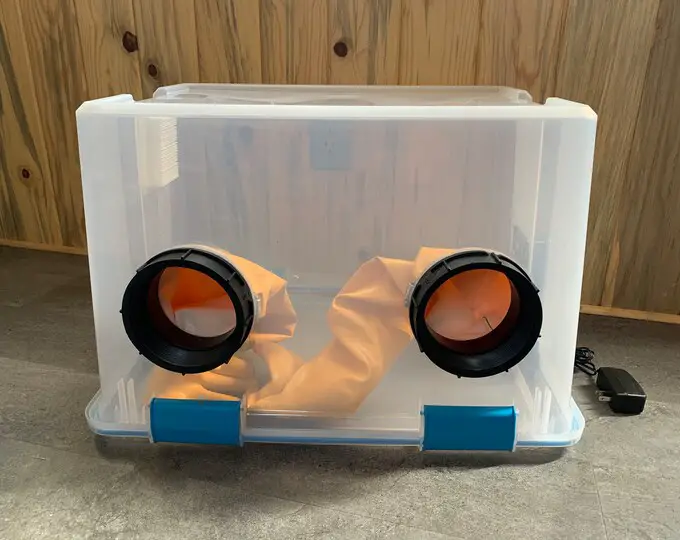
Some of the features of a glove box include:
- A sealed container with an airtight design that prevents contaminants from entering or escaping.
- A built-in HEPA filter removes particles from the air inside the box.
- Gloves that are attached to the box allow the user to reach inside while maintaining a barrier between the user and the materials inside.
The benefits of using a glove box include:
- Good containment: The sealed design of the box and the HEPA filter helps to keep contaminants out and prevent the release of hazardous materials into the environment.
- Easy to use: The gloves attached to the box make it easy for the user to manipulate materials inside without having to remove their hands from the box.
- Low cost: Glove boxes are relatively inexpensive compared to other types of containment equipment.
However, there are also some limitations to using a glove box, such as:
- Limited space: Glove boxes are usually small and may not be suitable for large or bulk materials.
- Not suitable for bulk cultivation: The sealed and filtered environment can be too dry for certain types of experiments or cultivation.
- Can get humid inside: If not properly ventilated, the inside of a glove box can become humid, which can be a problem for certain types of materials or experiments.
flow hood
A flow hood, also known as a laminar flow hood or a laminar flow cabinet, is a device that uses a HEPA filter to create a clean environment, typically used in laboratories and professional settings for tasks such as handling cultures, growing microorganisms, and performing sterile techniques.
Some of the features of a flow hood include:
- A HEPA filter removes particles from the air and creates a clean environment.
- A fan circulates the air inside the hood, pulling it through the HEPA filter.
- A work surface or bench inside the hood where materials can be manipulated.
The benefits of using a flow hood include:
- High-quality air filtration: The HEPA filter effectively removes particles from the air, creating a clean and sterile environment.
- Suitable for growing a wide variety of mushrooms: Flow hoods are often used for mushroom cultivation, as they provide a clean and controlled environment for the mushrooms to grow.
- Good containment: The flow hood effectively contains any contaminants or spores that may be present, preventing them from spreading to the outside environment.
However, there are also some limitations to using a flow hood, such as:
- Expensive to buy or build: Flow hoods can be costly to purchase or build, making them less accessible for some users.
- Requires technical knowledge to use: Flow hoods are technical devices that require some understanding of how they work and how to properly maintain them.
- Not suitable for bulk cultivation: Flow hoods are typically small and not designed for growing large quantities of materials.
walk-in chamber
A walk-in chamber is a large room or container that is used for growing mushrooms, typically in a commercial setting. They are designed to provide a controlled environment for mushroom cultivation, allowing for high yields and the ability to easily control various environmental factors such as temperature, humidity, and light.
Some of the features of a walk-in chamber include:
- Large size: Walk-in chambers are large enough to walk into, allowing for easy access and manipulation of the mushrooms inside.
- Environmental controls: Walk-in chambers are equipped with various systems such as heating, cooling, humidification, and ventilation to control the temperature, humidity, and air quality inside the chamber.
- Lighting: Walk-in chambers often include lighting systems to provide the mushrooms with the appropriate amount and spectrum of light they need to grow.
The benefits of using a walk-in chamber include:
- High yields: Walk-in chambers provide a controlled and optimized environment for mushroom cultivation, allowing for high yields of mushrooms.
- Easy to control environmental factors: Walk-in chambers are equipped with various systems for controlling the temperature, humidity, and air quality, making it easy to create the ideal conditions for mushroom growth.
- Suitable for a wide variety of mushrooms: Walk-in chambers can be used to grow a wide variety of mushrooms, as the environmental controls can be adjusted to suit the needs of different species.
However, there are also some limitations to using a walk-in chamber, such as:
- High cost: Walk-in chambers are expensive to purchase or build, making them less accessible for some users.
- Requires a large space: Walk-in chambers are large and require a significant amount of space, making them less suitable for users with limited space.
- Requires technical knowledge to set up and maintain: Walk-in chambers are complex systems that require some understanding of how they work and how to properly maintain them.
dedicated fruiting chamber
A dedicated fruiting chamber is a specialized type of mushroom fruiting chamber that is specifically designed for mushroom cultivation. These chambers are typically larger than other types of fruiting chambers and are equipped with advanced systems for controlling temperature, humidity, light, and other environmental factors to provide the ideal conditions for mushroom growth.
The benefits of using a dedicated fruiting chamber include:
- High yields: Dedicated fruiting chambers are typically large enough to accommodate multiple shelves or trays of mushrooms, allowing for high yields.
- Ideal environment for mushroom growth: Equipped with advanced systems for controlling temperature, humidity, light, and other environmental factors to provide the ideal conditions for mushroom growth.
- Effective air filtration: Typically have advanced air filtration systems that can remove particles and other contaminants from the air.
- Automation: Many dedicated fruiting chambers have automatic control systems that allow the grower to set and maintain the desired conditions with minimal intervention.
However, there are also some limitations to using a dedicated fruiting chamber, such as:
- High cost: Dedicated fruiting chambers are typically expensive to purchase or build.
- Requires technical knowledge to set up and maintain: Dedicated fruiting chambers are complex systems that require some understanding of how they work and how to properly maintain them.
grow tent
An indoor grow tent is a tent-like structure designed to create a controlled environment for indoor gardening. They are typically made of a durable, reflective material and are equipped with various features such as vents, ports, and observation windows to help control temperature, humidity, light, and other environmental factors.
Some of the features of an indoor grow tent include:
- Reflective material: The interior of the tent is typically made of a reflective material that helps to maximize the amount of light reaching the plants.
- Vents and ports: Indoor grow tents are equipped with vents and ports that can be used to control temperature and humidity, and to bring in fresh air and exhaust stale air.
- Observation windows: Indoor grow tents often have observation windows that allow the user to check on the plants without having to open the tent and potentially introduce contaminants.
The benefits of using an indoor grow tent include:
- Affordable: Indoor grow tents are generally less expensive than other types of indoor gardening equipment.
- Easy to set up: Indoor grow tents are relatively easy to set up, making them accessible for users of all experience levels.
- Easy to control environmental factors: The vents, ports, and other features of an indoor grow tent make it easy to control temperature, humidity, and other environmental factors.
- Can be used for various types of plants, not just mushrooms: Indoor grow tents can be used to grow a wide variety of plants, including mushrooms.
However, there are also some limitations to using an indoor grow tent, such as:
- Limited space: Indoor grow tents are generally smaller than dedicated fruiting chambers, which can limit the number of plants that can be grown inside.
- Not suitable for bulk cultivation: Indoor grow tents are generally not designed for large-scale cultivation, and may not be suitable for growing large quantities of mushrooms.
- Not as effective as a dedicated fruiting chamber for mushroom cultivation: While indoor grow tents can be used for mushroom cultivation, they may not be as effective as dedicated fruiting chambers, which are specifically designed for mushroom cultivation.
Conclusion
Mushroom cultivation requires a controlled environment that mimics the natural habitat of mushrooms in order to achieve high yields. A fruiting chamber, also known as a grow room or a fruiting room is a specialized space that is designed to provide the ideal conditions for mushroom cultivation. The best mushroom fruiting chamber will depend on the specific needs and resources of the cultivator.